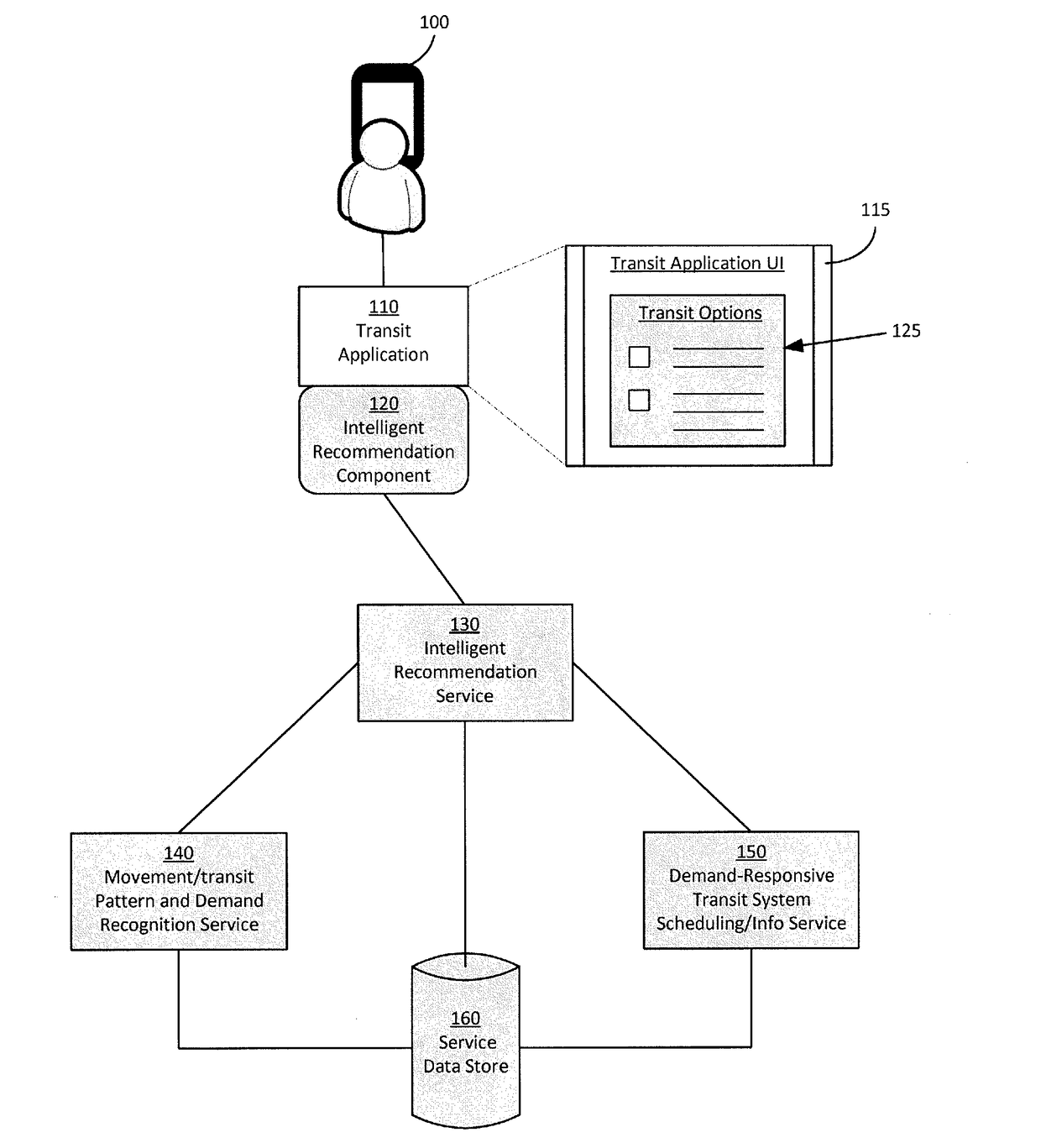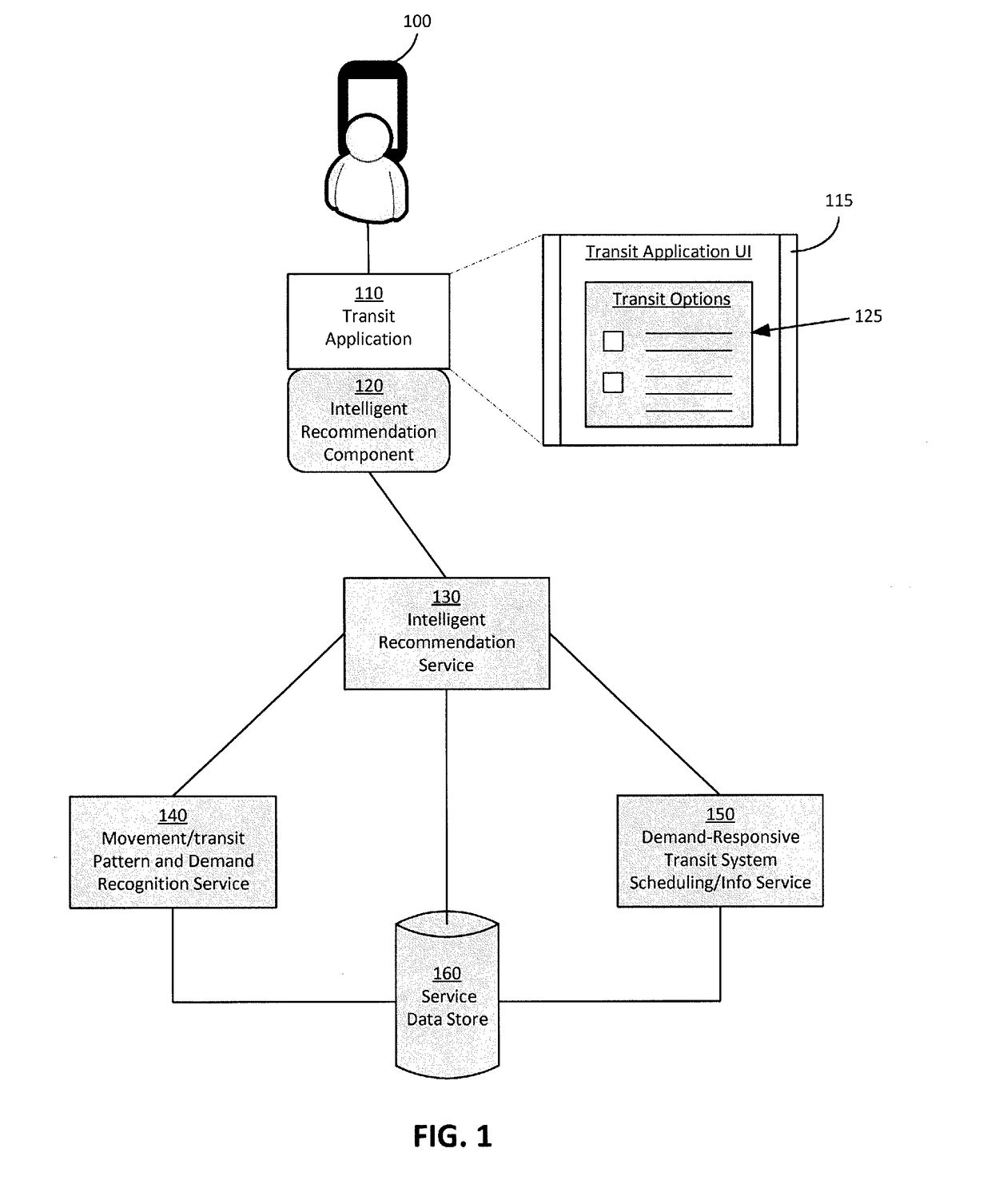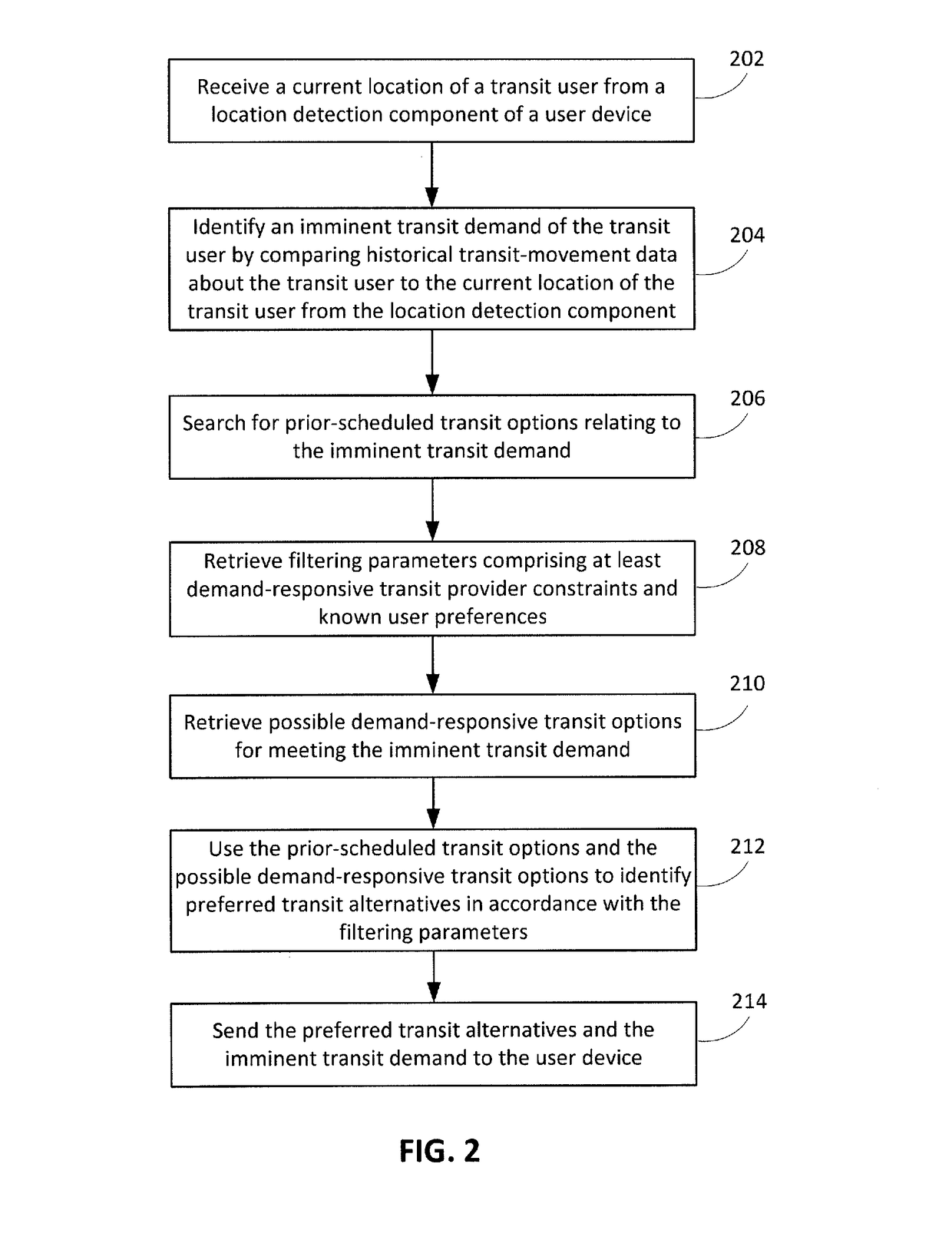Systems and methods for intelligent, demand-responsive transit recommendations
a transit recommendation and intelligent technology, applied in the field of intelligent, demand-responsive transit recommendations, can solve problems such as regular bus service, achieve the effects of reducing the threshold of user participation, widening the user base, and improving the quality of transit recommendation recommendations
- Summary
- Abstract
- Description
- Claims
- Application Information
AI Technical Summary
Benefits of technology
Problems solved by technology
Method used
Image
Examples
Embodiment Construction
[0021]Techniques and systems are described that enable the intelligent recommendation and presentation of demand-responsive transit services. Presented below is a detailed description of embodiments of the techniques and systems of subject invention, including numerous illustrative example scenarios.
[0022]FIG. 1 shows an example component environment in which a transit application may be enhanced with intelligent recommendations of demand-responsive transit services. In FIG. 1, a transit user interacting with a mobile device 100 (e.g., a smartphone) is shown. The mobile device 100 can be, for example, a type of device / system 1000 as described in relation to FIG. 5. The mobile device 100 may provide a transit user the opportunity to get transit information, such as bus / train schedules or real-time updates regarding delays, for example, via a transit application 110 accessible through the mobile device 100.
[0023]A “transit application” refers to a software program that enables a trans...
PUM
 Login to View More
Login to View More Abstract
Description
Claims
Application Information
 Login to View More
Login to View More - R&D
- Intellectual Property
- Life Sciences
- Materials
- Tech Scout
- Unparalleled Data Quality
- Higher Quality Content
- 60% Fewer Hallucinations
Browse by: Latest US Patents, China's latest patents, Technical Efficacy Thesaurus, Application Domain, Technology Topic, Popular Technical Reports.
© 2025 PatSnap. All rights reserved.Legal|Privacy policy|Modern Slavery Act Transparency Statement|Sitemap|About US| Contact US: help@patsnap.com



